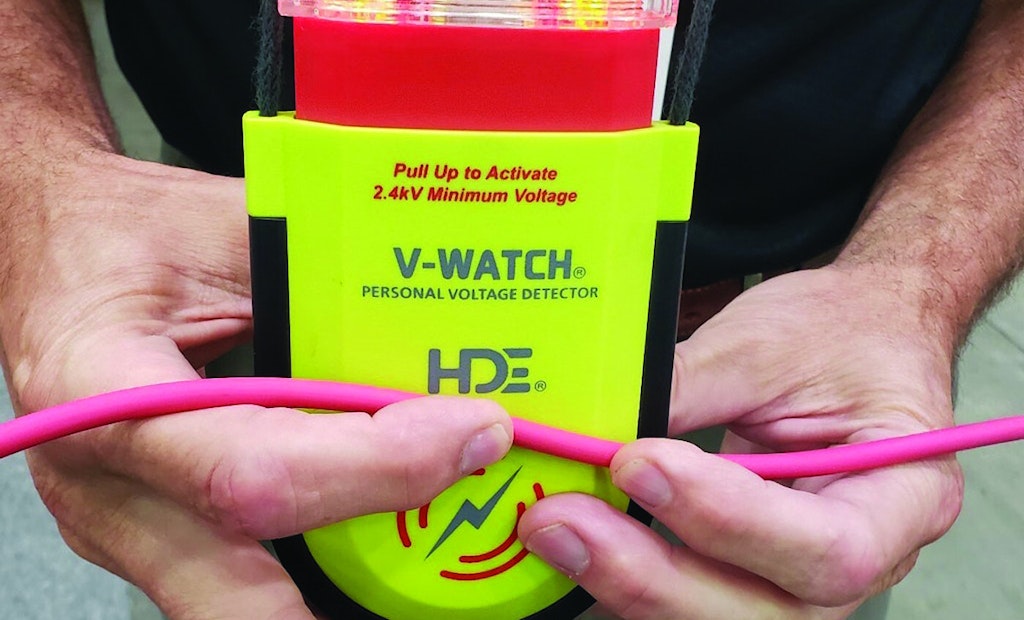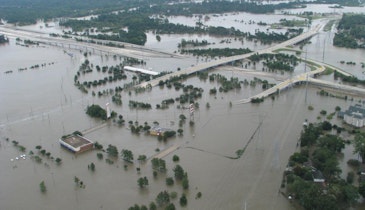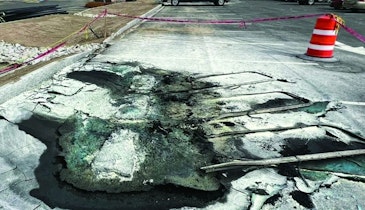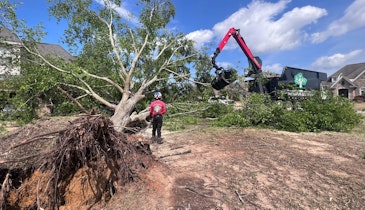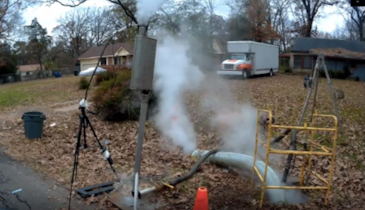Interested in Safety?
Get Safety articles, news and videos right in your inbox! Sign up now.
Safety + Get AlertsIt may have happened five years ago, but Tracy Massey and his crew remember the incident like it was yesterday.
Massey is the senior foreman at Marshall-Dekalb Electric Cooperative in Boaz, Alabama. He has worked at the cooperative for 28 years, and one specific day on the job is forever etched in his memory.
On Oct. 28, 2018, Massey and his eight-member crew of apprentices, linemen and an equipment operator were working in Wewahitchka, Florida. They were restoring power and restringing downed wires after Hurricane Michael, assisting Gulf Coast Cooperative. On that fall afternoon at 1:34 p.m., work on the power lines quickly switched from routine to frightening.
“The line had been dead the whole time, then all of a sudden, we started getting warnings on the voltage detector,” Massey says. The alerts from their V-Watches stunned them.
“All of a sudden, they went off,” says Massey. “Everybody’s. All nine went off. They were only on for two seconds, and then they quit. We didn’t know what happened. It was unnerving.”
The V-Watch by Greenlee is a personal voltage detector that storm restoration workers and first responders wear outside their clothing. When the V-Watch detects an electrical hazard, an alarm sounds and lights blink. The battery-operated, lightweight and water-resistant voltage detector has an initial warning distance of about 7 feet from a 4 kV AC conductor.
It wasn’t the first time the V-Watch alerted the crew to high voltage on this particular storm restoration trip; it happened two other times. But it was the first time the alarm caught them off guard, in the middle of their hurricane recovery work, and not at the start of the job.
TRACKING DOWN DANGER
After making sure the crew was safe, Massey set off to find out what had put them in danger, revisiting three houses and a well pump that were connected to the electrical lines. He had stopped at all three before the crew started their restoration work.
The hurricane destroyed one house, and the electricity was disconnected. At another house, the family was at home and a generator was running. Massey opened up the dropout on their transformer to keep it from back feeding through the line.
At the second house, the windows and doors were boarded up. When initially visiting the house, no one was home and no vehicles were in sight. Massey didn’t open up the dropout because he didn’t think the home was occupied. He couldn’t imagine that anybody was living there.
“That’s one of the reasons we weren’t worried about that house. It was boarded up, and it had been 20 days since the power went out,” he says.
When Massey checked the generator at the boarded-up house after the V-Watch alert, he immediately saw the problem. The generator had no interlock kit to prevent the main breaker from being energized once the generator was switched on. The residents at the home made a grave mistake when they came home that afternoon and plugged in the generator. They must have seen the electrical crews working on the power lines when they drove past to get to their house but evidently didn’t realize the danger they put the workers in.
Understandably upset, Massey quickly turned the generator off.
“I had to turn it off, and when I did, I jerked the wires out of the breaker box and threw them out in the yard,” he says. He told the family not to hook the generator back up and left to finish the restoration work.
REAL-LIFE REMINDERS
Massey says it’s important to note that generators installed by professionals automatically open up and don’t backfeed, but generators that homeowners buy off the shelf and plug in themselves can be dangerous if they’re connected straight to the breaker.
Also, restoration workers should know when the electricity went out due to a storm. The Wewahitchka homes had been without power for about three weeks.
“The longer they’re out of electricity, the more generators that get plugged in,” Massey says. Before arriving in Wewahitchka, the Marshall-Dekalb crew restored power in storm-damaged southern Alabama for Wiregrass Electric Cooperative and then completed a job back in their home co-op.
For Massey and his crew, the close call was a reminder to always wear their safety gear, including the V-Watch.
“We wear it all day on storm trips like that,” he says.
They wear the V-Watch for local storm restoration work, also. Everybody on the crew has one, and after that memorable day in 2018, they all wear them. They learned that something unexpected can happen — a dead line can suddenly be energized again. The Marshall-Dekalb Electric Cooperative crew has an astonishing story to tell — and they’re glad they all lived to tell the story and its happy ending.
